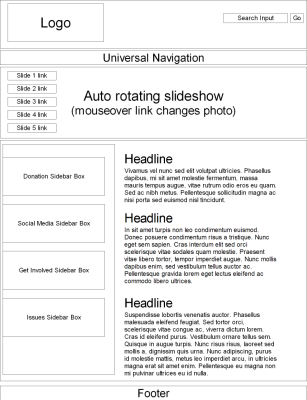I think I’ve finally figured out what’s bothering me about my new job. It’s not that I’m only using a sixth of my available skill set. It’s not that they’ve got the work chopped up so finely that they’ve got 25 people doing basically all the same things I did as a shop of one at my last job. And it’s also, not really, the fact that everyone seems to have “it’s not my job”-itis.
What bothers me about my new job is that it’s intellectually dishonest.
The people I work for, UberDirector and DeputyDirector, only have the vaguest idea of what they’re trying to do and an even vaguer idea of how to go about doing it. I base this conclusion on two behaviors:
- they keep using key terms from my profession to mean something that they absolutely do not mean anywhere else, and
- not only do they expect everyone to but everyone does indulge them in this by altering their vocabulary, work methods, and products to fit these incorrect meanings.

I realize that I am a bit of a geek and a pedant when it comes to language but I can’t let go of the idea that words matter. Common definitions understood by all are key to knowledge and are the foundation of communication. Without common, consistent definitions only insiders know what is being said and decided. No where is this more in evidence than in business.
Buzzwords are coined to create an elite, to make old concepts sound new, exciting, and most of all, exclusive. Despite how buzzwords masticate language and meaning they are distinct from legitimate professional terminology that describes concepts unique to an area of practice. You could not have the practice of law without habeas corpus, the practice of medicine without viscera, architecture without elevation, or banking without compound interest.
What distinguishes professional language from ordinary speech is how context informs meaning. Elevation in common speech means “augmentation of or increase in the amount or level of something.” Because it attempts to provide a comprehensive reference, askoxford.com includes not only that definition but also the one specific to the practice of architecture: “a drawing or diagram, especially of a building, made by projection on a vertical plane.” This is why using a term in a particular context to mean something unlike what others operating in that same context mean is either ignorant or dishonest.
A week ago I attended yet another in a series of seemingly endless meetings for a refresh on a high profile website. Making any changes to this site requires getting buy-in from a lot of people most of whom have the power to stop the process or to request things that just really don’t make any sense from a communications or usability perspective. It pays to make sure that whatever ideas the web group, the theoretical experts, have are presented in the best light possible. And it is because the stakes are so very high that I found myself wondering if I’d heard what I thought I’d heard when UberDirector and DeputyDirector ask the designer on the team to produce a “working wireframe with live content.”
The reason I found this so shocking is because the term wireframe has a very specific meaning in web site development, one that absolutely precludes the use of live content.
A wireframe, as Wikipedia accurately tells us, is “a visual guide that represents the skeletal framework of a website. The wireframe depicts the page layout or arrangement of the website’s content, including interface elements and navigational systems, and how they work together. The wireframe usually lacks typographic style, color, or graphics, since the main focus lies in functionality, behavior, and priority of content. In other words, it focuses on ‘what a screen does, not what it looks like.'”

A low-fidelity wireframe is essentially a bunch of boxes on a plain white page that give an idea of where certain elements are going to be placed. A high fidelity wireframe might include some specific language for very high-level elements like the universal navigation. Such a wireframe might also give an indication of colors or shading to better convey what the page will look like.
At no point in time does a wireframe use actual content.
At no point in time does a wireframe actually function. Functional sites with approved designs are called prototypes.
In fact, even a prototype, a working version of an approved design, usually doesn’t use actual content until the very last stage. Actual content that pertains to a client’s business serves only one purpose in the information architecture, design, and development stages of a site: it distracts the client. Most people who are not web professionals zoom directly in on the words if you provide them and immediately begin editing uttering the immortal client comment “We’d never say it like that. That needs to be changed before the site goes live.” And while content editing does need to happen the way to do it is not in the context of approving a restructured information architecture or a color change for one of the main navigation buttons.
I understand that a lot of people are visual thinkers. They need to see something in front of them that is close to the completed idea before they can formulate an opinion. But if you’re going to deliver a design comp with suggested IA labels in place to them ask for that.

I know I’m probably splitting hairs, and I felt bad about splitting hairs until I sat down in the meeting in which all of these materials were presented to UberDirector’s boss, DeputyAssistantSecretary, who proceeded to refer to, and I quote, “communications and what we do on the web.”
Now, I’m not arrogant enough to believe I know everything. In fact, I know I don’t know everything and I try to learn something new every day, but for some reason I can’t seem to stop thinking about the aphorism about the one-eyed man in the land of the blind.
Leave a Reply